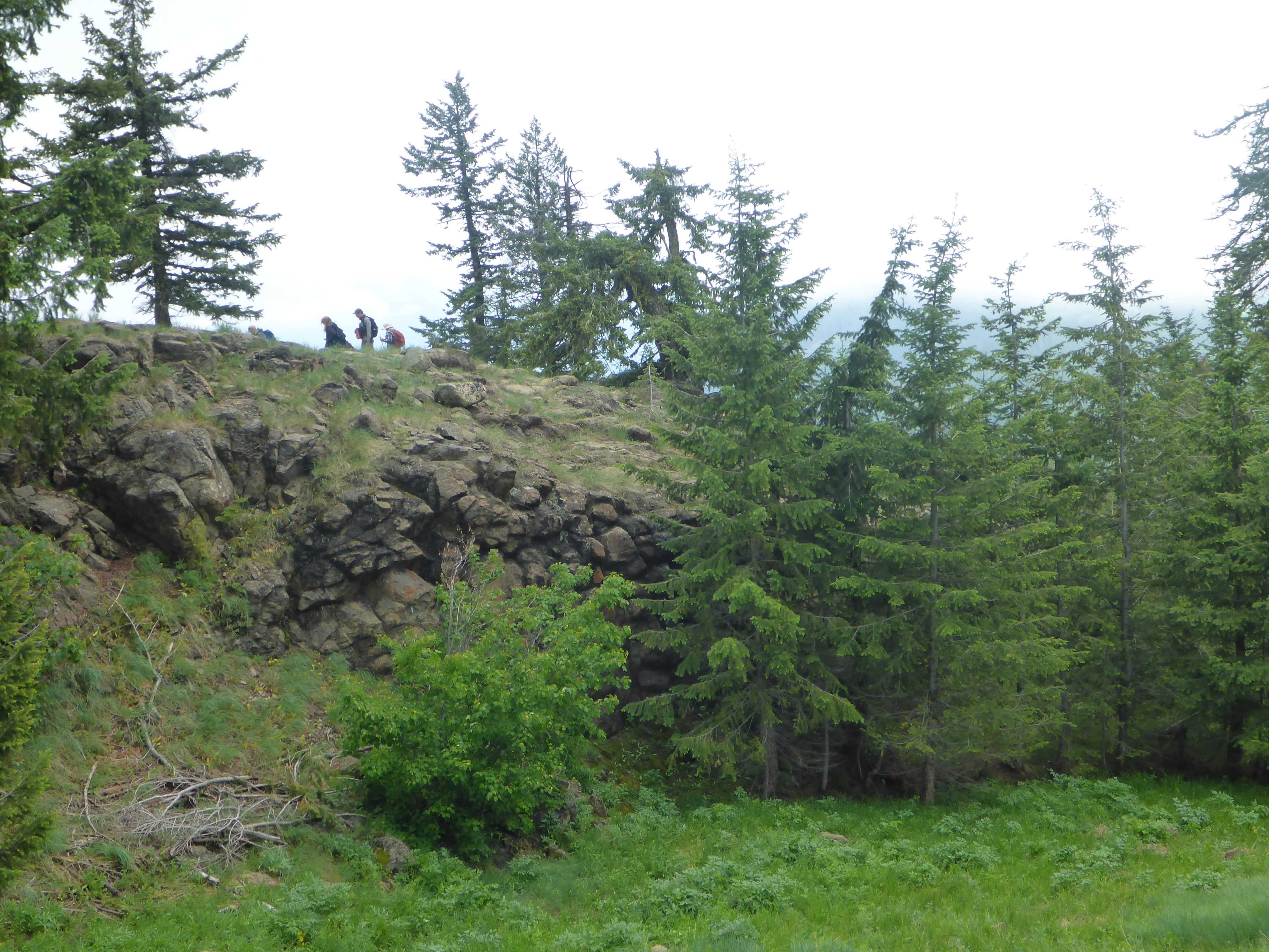On Record Ridge near the town of Rossland, British Columbia, the perfect conditions exist for a very particular plant called the mountain holly fern to grow.
This fern grows in just two isolated areas in B.C., and is listed as a threatened species in Canada. The scattered, sporadic nature of its growth is in part due to its reliance on very specific soil conditions — the fern grows in rocky outcrops rich in magnesium and iron. Unfortunately for the Record Ridge ferns, the high magnesium content of the rocks in the area have attracted the mining industry’s attention. Junior mining company West High Yield (WHY) Resources has been exploring the site since 2006 and hopes to start open pit mining in the near future. This would have severe consequences for the fate of the mountain holly fern.
On June 21, 2023, Wildsight submitted a petition to the Ministry of Environment and Climate Change Canada (ECCC) arguing that the mountain holly fern faces imminent threats to its survival and recovery. We called upon Minister Steven Guilbeault to fulfill his duty and submit an emergency order recommendation under the Species at Risk Act. The ministry responded saying the ECCC and the Canadian Wildlife Services would undergo an imminent threat assessment to examine the damage that a mine would pose to the fern, which has the potential to lead to an emergency order.
The proposed Record Ridge magnesium mine would result in the destruction of over 90% of the mountain holly fern’s available habitat at Record Ridge, and more than half of its total habitat province wide — estimated to be a minuscule 1.1 square kilometers. If the Record Ridge fern population was destroyed, the only known place where the fern would exist in B.C. would be in a 0.4 square kilometer area on Olivine Mountain, near Hope. In a world of increasing forest fire risk and rising temperatures, this vulnerable species is at extreme risk of disappearing from B.C., and has already likely been damaged at Record Ridge by mining exploration activities such as drilling and road building.

A problematic proposal
The proposed mining project is currently under review by the BC Environmental Assessment Office (BCEAO), but WHY Resources has submitted an application that does not automatically trigger an environmental assessment. Under the Environmental Assessment Act, quarries with a production capacity of 250,000 tonnes per year or more must undergo an assessment to examine the risks that the project would pose to the environment. WHY Resources applied for a quarry permit with a capacity of 249,000 tonnes per year.
Used mainly in aluminium alloys, magnesium can be extracted from different types of deposits, some of which require much more processing than others. Easily processed minerals such as magnesite can be quarried with a relatively small environmental impact, but at Record Ridge, the magnesium is found in rocks made mainly of a mineral called serpentinite. To date, extracting magnesium from serpentinite has only been done experimentally and requires extensive processing. WHY Resources clearly lists magnesium-rich serpentinite as the targeted mineral and includes it in the production plan. However the company chose to file a permit as a quarry despite the mineral not being listed in the legislation as one eligible for quarrying. If the proposal was submitted more accurately as a mineral mine, it would be subject to more stringent limits and would easily trigger an environmental assessment.
Finally, the permit WHY resources sent to the BCEAO listed only two years of active mining, whereas the WHY website states that mining operations could continue for up to 20 years. This indicates that the company will likely submit an expansion proposal almost immediately after the permit is given — a common method used by the mining industry to bypass production limits and avoid regulatory oversight.
Widespread public opposition
Many Rossland locals have also been working to raise awareness of the damages that open pit mining would cause, both to the fern, the environment, and local communities. Specifically, concerns include noise from machinery and blasting processes, air pollution, and increased mining truck traffic. The Save Record Ridge Action Committee has been resisting WHY’s efforts to move the mine forward; they have a convenient list of ways you can support the cause on their website.
The issues with the Record Ridge mine proposal coupled with the extreme threat to the mountain holly fern make the possibility that this mine may legally be able to proceed without the due diligence of an environmental assessment seem ridiculous. Wildsight issued a complaint to this effect to the BCEAO in October, leading to a response saying that they are considering this in the review process.
While the situation is ongoing and the outcome uncertain, Wildsight remains vigilant. We, alongside local communities, are working to protect the mountain holly fern and its habitat from the impacts of open pit mining.







